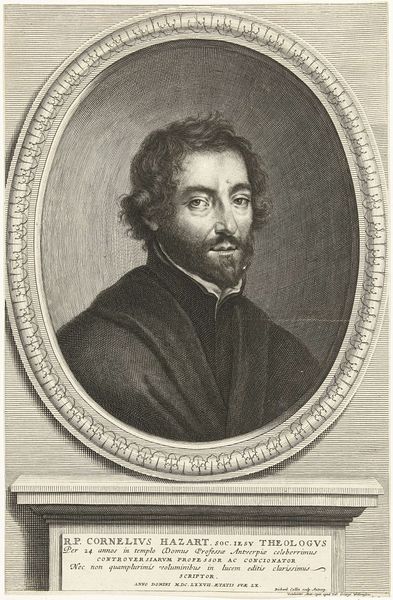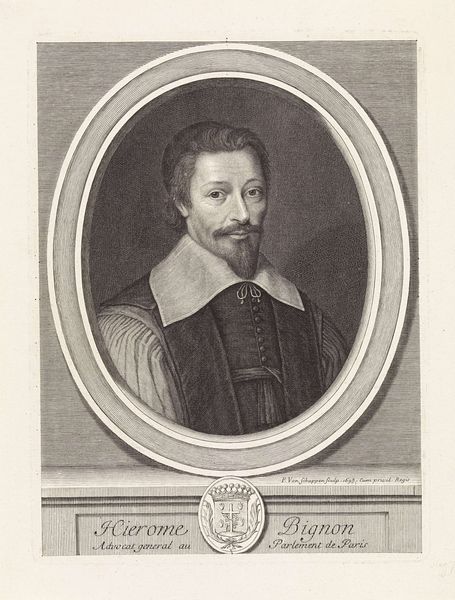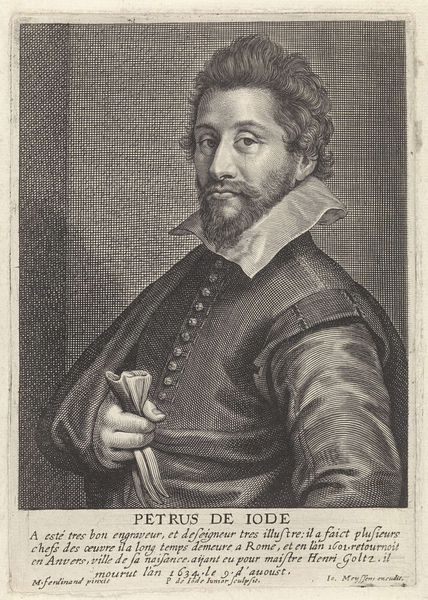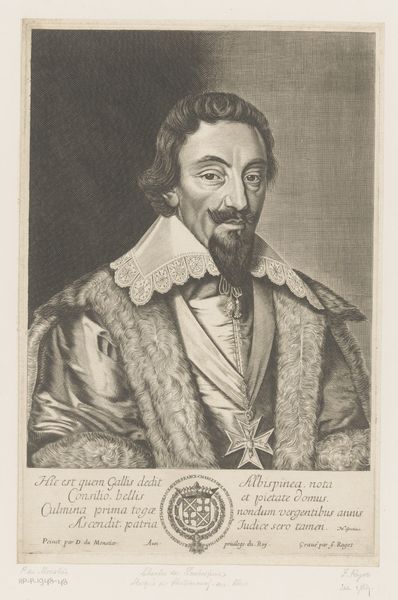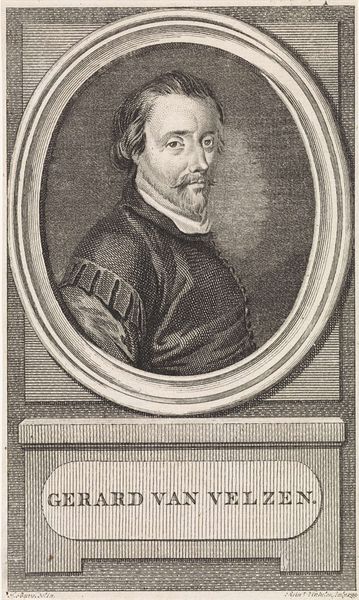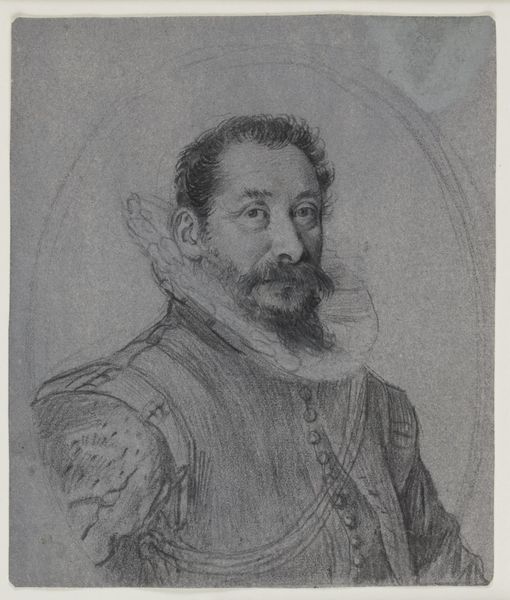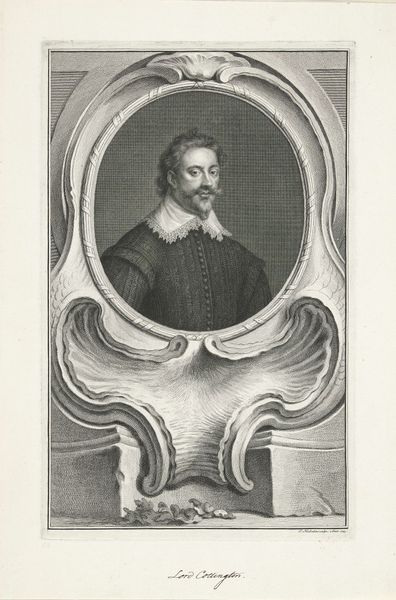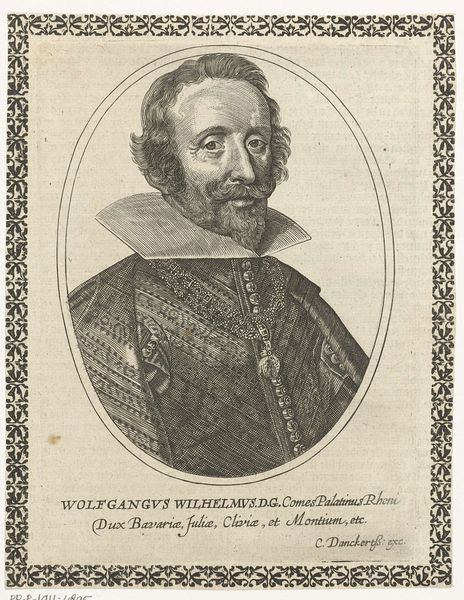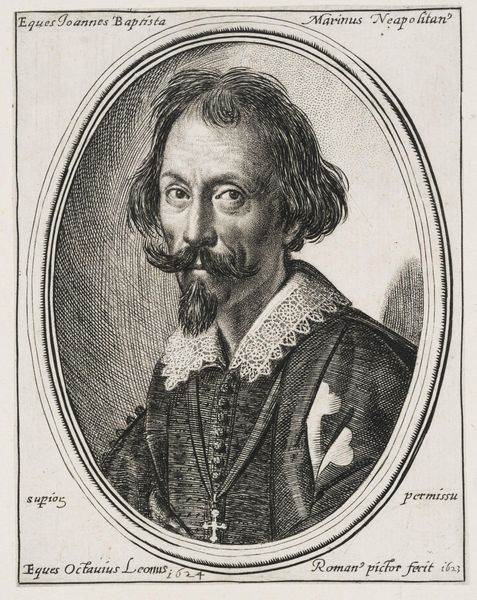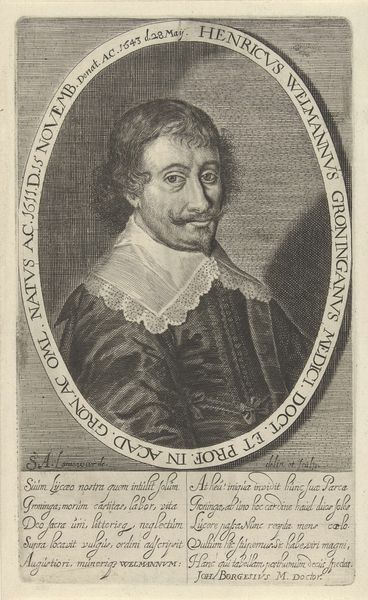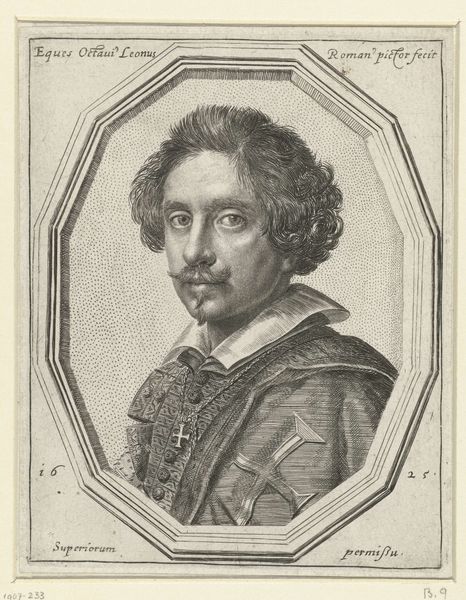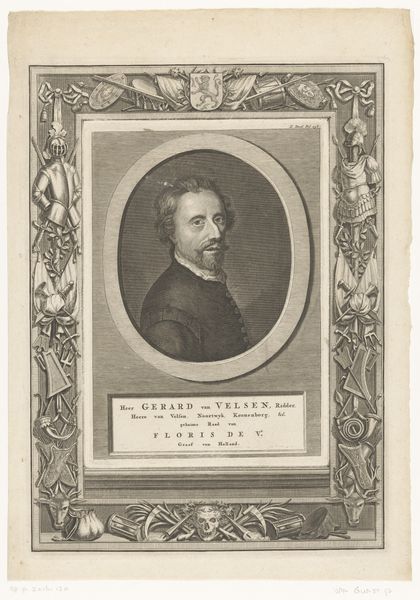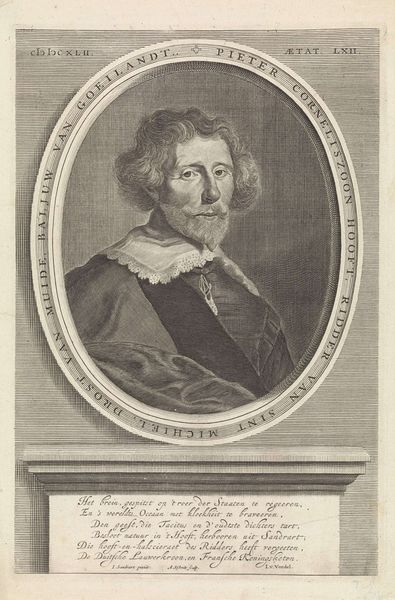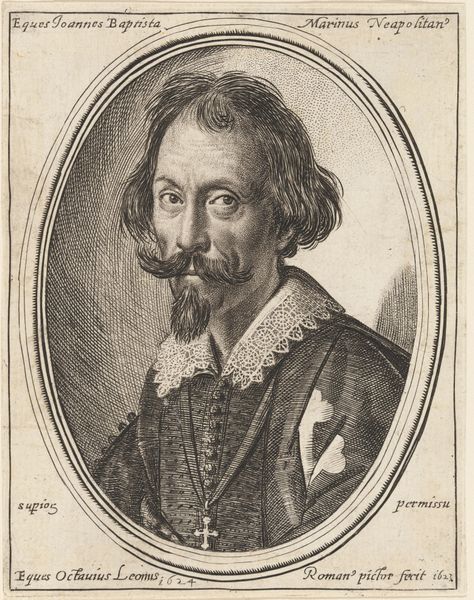
print, engraving
#
portrait
#
baroque
# print
#
history-painting
#
engraving
Dimensions: height 260 mm, width 176 mm
Copyright: Rijks Museum: Open Domain
Curator: Welcome to this intriguing print, "Portret van kunstenaar Michelangelo," dating from between 1690 and 1750, created by Vincenzo Franceschini. It's an engraving. Editor: There's a certain gravitas to the image, despite the medium. The oval frame focuses attention intensely on the sitter. Curator: Absolutely. Notice the lines? Franceschini uses the technique to create depth and texture. Think about the engraver’s tools, the pressure, and the labor invested to create these tonal variations solely through lines. It’s a complex and fascinating production process. Editor: The use of line is undeniably skillful. I'm particularly struck by the balance. Look how the tight lines create this dramatic texture within the coat juxtaposed to his pale face. The portrait is built on this kind of juxtaposition. The details draw the eye. Curator: Knowing this was made during the Baroque period, it's important to examine the relationship between artist and patron, as prints would have been circulated, creating both income and fame. This portrait helped cement the artistic and social identity tied to this depiction of the artist Michelangelo, as a highly skilled artisan, and this helped establish cultural and monetary value. Editor: The rendering of the gaze and mouth conveys a very particular feeling: a blend of melancholy and defiance, framed by the beard. We interpret from those few formal decisions what amounts to something complex about this figure. Curator: But consider, we are not necessarily capturing Michelangelo as an individual, but instead, solidifying the myth of the artist. The prints such as these supported both the patron and the legacy. The medium of engraving itself facilitates dissemination. Editor: Indeed. Well, thinking through the formal aspects really clarified the intense dialogue contained in such a deceptively simple print. Curator: I agree. It’s important to think about how even seemingly straightforward artistic productions are built out of complex labor practices, class structures, and cultural needs.
Comments
No comments
Be the first to comment and join the conversation on the ultimate creative platform.
